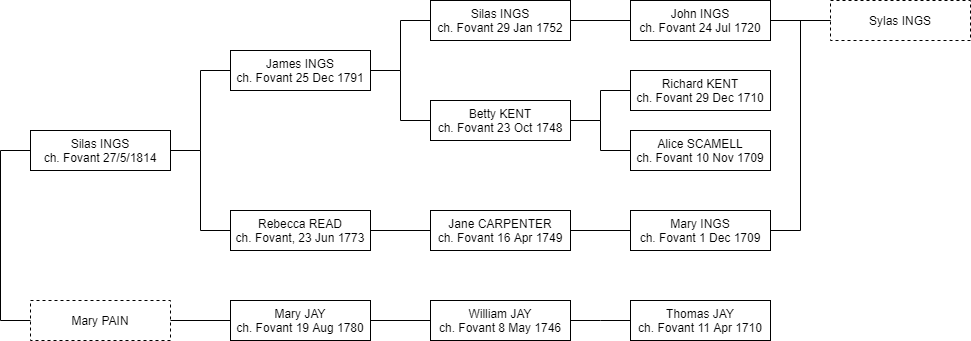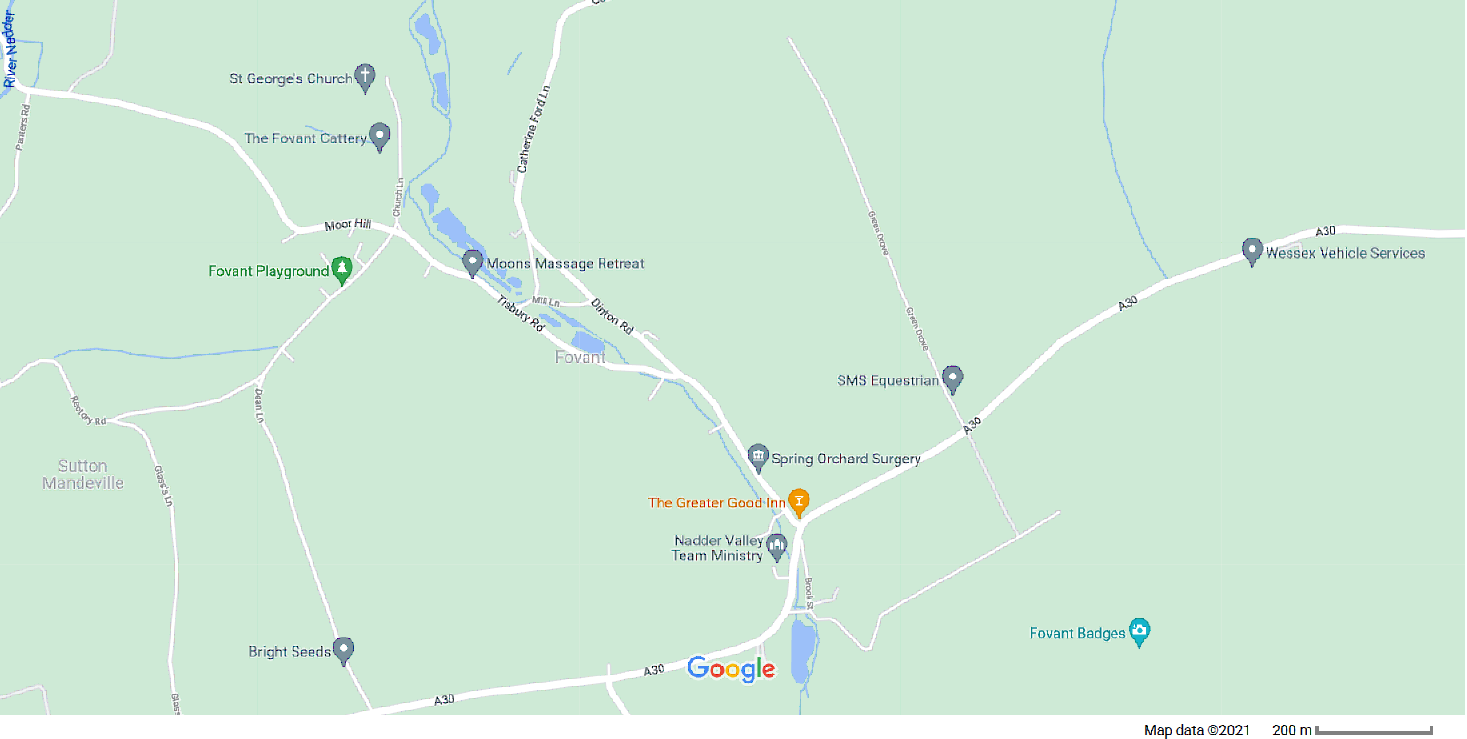
Visited: 5th July 2016 and 16th July 2024
Fovant is a springline village on the north side of the West Wiltshire Downs. The village lies along a stream running north from Fovant Down which is fed by a number of springs through the village. The stream is a tributary of the River Nadder.
"Vision of Britain" entry for Fovant
Alan's 2 x great-grandparents Silas Ings and Mary Ings (née Pain) migrated to New South Wales with their 7 year old son Richard in 1856. They arrived on the Ship "Sultana" on 27 June.
Silas and Mary had been living in Everleigh, Wilts but Silas originally came from Fovant, as did Mary's mother Mary Pain (née Jay)
The chart below shows some of Alan's direct ancestors who were baptised in the Church of St George in Fovant. This chart is incomplete, and we suspect that some of the lines continue much further into the past.

This map shows the village of Fovant and its surroundings. High Street runs from the A30 near "The Greater Good Inn" and splits to form Tisbury Rd and Dinton Rd. There is a lookout for the Fovant Badges on the A30, about 600 m east of the High St intersection. The brook through the village follows the line of springs.
On our original visit, we did not realise that the church was open for inspection. We remedied this omission on the second visit.

| Thatched Cottage | Stocks |
| Looking North along High Street | One of the village springs |
The current church dates from the 13th-15th century with Victorian restorations. Due to the number of military camps and hospitals in the area there are a significant number of Commonwealth War Graves in the churchyard as well as a CWGC cross.
Historic England: Church of St George, Fovant
| Churchyard gate and Commonwealth War Graves Commission Cross | Fovant St George |
| Baptismal Font | East Window |
During WWI Salisbury Plain became a major military training ground, with training camps housing recruits from many regiments. After the Gallipoli Campaign, when Australian troops were diverted to the Western Front, Australian battalions and reinforcements spent time here in final training. It was also the location of a number of military hospitals. Starting in 1916 soldiers worked in groups cut their regimental badges into the chalk. By 1918 the badges of 20 units had been cut into the chalk. After the war ended most of the badges were left to decay. More badges were cut during WWII, but again most were left to decay.
'The Fovant Home Guard Old Comrades Association' performed some maintenance, but was mainly a social group. In 1961 it was renamed 'The Fovant Badges Society' and dedicated itself to maintaining and restoring the remaining badges. There are now twelve maintained badges, nine of them on Fovant Down.
Cecil William Ings trained on Salisbury Plain on his way to the Western Front in 1917. Perhaps he saw the badges.
| The Fovant Badges | The AIF badge |
Return to Wiltshire Places
Return to Genealogical Tourism
Return to Genealogy Home Page
Return to LongArm2138